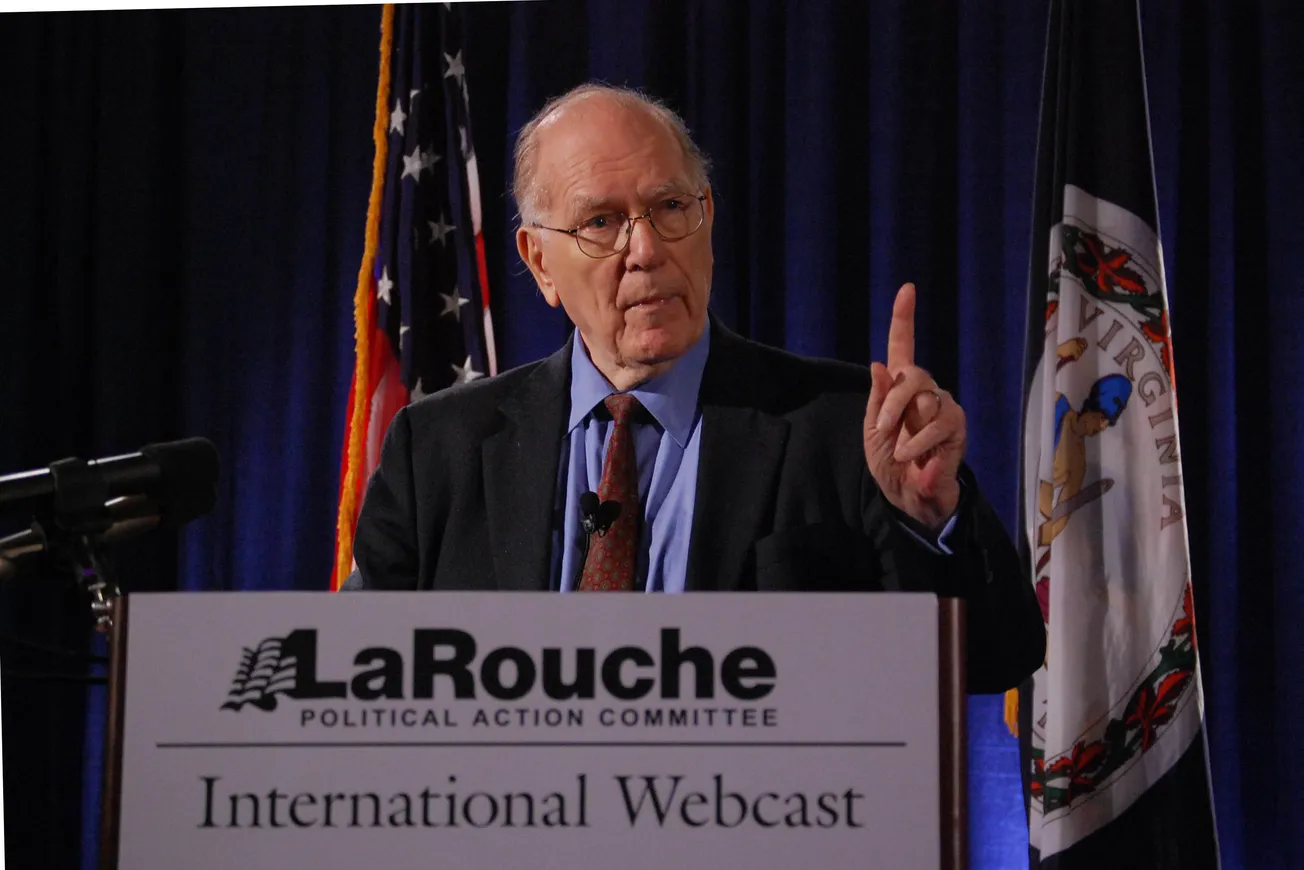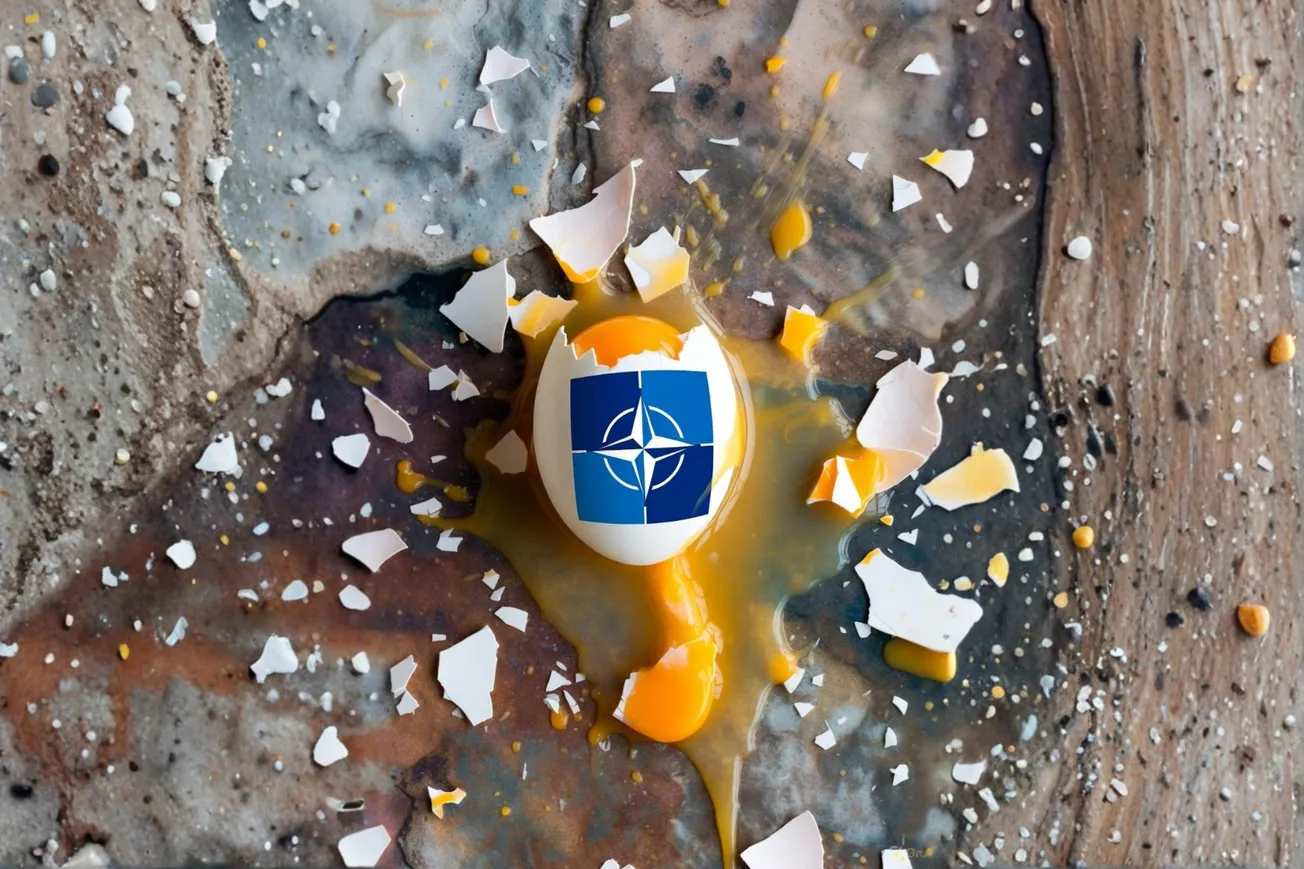September 8 marked the 102nd birthday of Lyndon LaRouche—the world-historic statesman and the most accurate economic forecaster of his time. There is no one whose life and contributions stand more at the center of current world history than LaRouche, and at the same time whose enemies tried harder to silence, slander, and eliminate him. As the current world system is in a process of breakdown, shifting from the post-World War II order to a new, post-colonial architecture (if we survive such a transition), there is no one whose work will play a more definitive role in determining the success of a new system than Lyndon LaRouche—whose legacy is currently being carried forward by his wife, Helga Zepp-LaRouche.
In an interview in 1976, LaRouche insisted that “the post-war international monetary system is in the process of collapse,” and warned that, if not replaced, the world was on a fast track toward a depression worse than the 1930s and a thermonuclear war among superpowers. However, he also laid out the conditions for a solution to this crisis:
“Obviously, there is no issue between the Soviet bloc and the NATO countries as nations which would warrant a thermonuclear war. It’s only this monetary crisis which brings us into this fix. So therefore, if we get a new monetary system, we not only obviate the danger of general depression—no depression need occur—but we also remove the world condition which would lead into thermonuclear war.”
Therefore, LaRouche said, “The basic form of the solution is essentially this: the OECD countries are bankrupt, the developing sector is bankrupt. But it needn’t be a disaster…. You simply take this mass of unpayable paper, shove it to one side for future renegotiation, set up a new monetary system to create credit to keep basic production and agriculture and industry going. Now at this point we can have, that is any one of the White House who wants it, can have a new international monetary system which would establish approximately $300 billion a year of long-term credit principally for exports of industrial commodities from the advanced sector to the developing sector, of which the United States share would be approximately $100 billion a year. This would get us out of the depression, would get the world out of the depression, and would provide a stable monetary system and long-term perspective for growth. Without such a measure there’s no hope for avoiding the depression and I think very little hope for avoiding war.”
In a later question, LaRouche elaborated on how this would work, including the key areas of investment for global economic growth: “We have in the developing sector a capability in terms of well-defined projects … agricultural development, industrial center development, urban development, and infrastructure development. We have a capability of putting into the developing sector upwards of a half-trillion dollars a year—that’s the world’s capability. This involves massive agricultural development in the subcontinent of Asia, we can turn the Rio de la Plata region in South America, that’s northern Argentina, southern Brazil and Uruguay, turn it into one of the great agricultural and industrial areas of the world in terms of production, all it requires is tractors, fertilizers, and so forth. The Sahel, which is now a plague center, a center of hunger and disease, could, over a 15-20 year period, not only in the short term be brought out of its present misery, but can become the great breadbasket for all of Africa. In addition, India … while it’s a poor country on the one hand in terms of its agriculture, India has the third largest population of scientists and engineers in the world—a great industrial potential as well as the means for developing it’s agriculture….
“The byproduct of increasing world export to the developing sector by $300 billion for this kind of work would mean that you would get a secondary growth in industrial requirements, a growth in world trade, which would mean we’d be into the largest industrial boom in modern history.”
In other words, LaRouche called for the creation a new, win-win financial architecture that would foster worldwide economic growth. The irony of today’s current situation, in particular the occasion of LaRouche’s 102nd birthday during this month of September, is that LaRouche’s forecast of 1976 has, in a sense, condensed into the current state of affairs in the world today. Consider the following:
The Western-dominated financial system is over-leveraged and teetering on the brink of collapse, kept afloat only by enormous quantities of dollars which have been pumped into the system over the recent years at the expense of drastically collapsed standards of living for Americans and citizens around the world. At the same time, the nations of the West are plunging headlong into a thermonuclear war drive against Russia, with China not far in the distance, as a result of the latter two’s refusal to adopt the increasingly bankrupt and dysfunctional system which LaRouche characterized nearly 50 years ago. Also ironic is the fact that last week, both Russia and China hosted their own respective summits, the Eastern Economic Forum (EEF) in Vladivostok and the Forum on China-Africa Cooperation (FOCAC), epitomizing the fact that growing portions of the world are taking up precisely the subject of physical economic development as the cornerstone of a new win-win financial architecture to replace the dying trans-Atlantic. It is precisely such a threatened new system which the Anglo-Americans have declared they will go to thermonuclear world war to stop.
On Saturday, Sept. 7, the heads of the American and British intelligence agencies were rolled out in front of an audience in London to warn the world about the “danger” represented by Russia and China, and at the same time to insist that the U.S.-U.K. “special relationship” will underpin the world “into the next century.” They declined to mention that the U.S. is currently revamping its nuclear doctrine while the U.S. and U.K. are abolishing the renewal requirements for their nuclear-sharing doctrine in preparation for a potential preemptive nuclear war on Russia. They also failed to mention that ever-greater efforts are underway to confront China, including the potential deployment of medium-range Tomahawk missiles to the Indo-Pacific.
While many may be fooled by these kinds of comic-book-style narratives, the power of truth—as LaRouche wielded it—is far stronger. History can be made to shift through the concerted efforts of small but intellectually superior bands of organizers, who are able to communicate the above-referenced truth to others—especially in times of crisis when previously-accepted narratives are breaking down. Such is the nature of the actions of the International Peace Coalition, which just held a breakthrough meeting last week. Take courage in this process, and build the coalition in the days and weeks to come.







